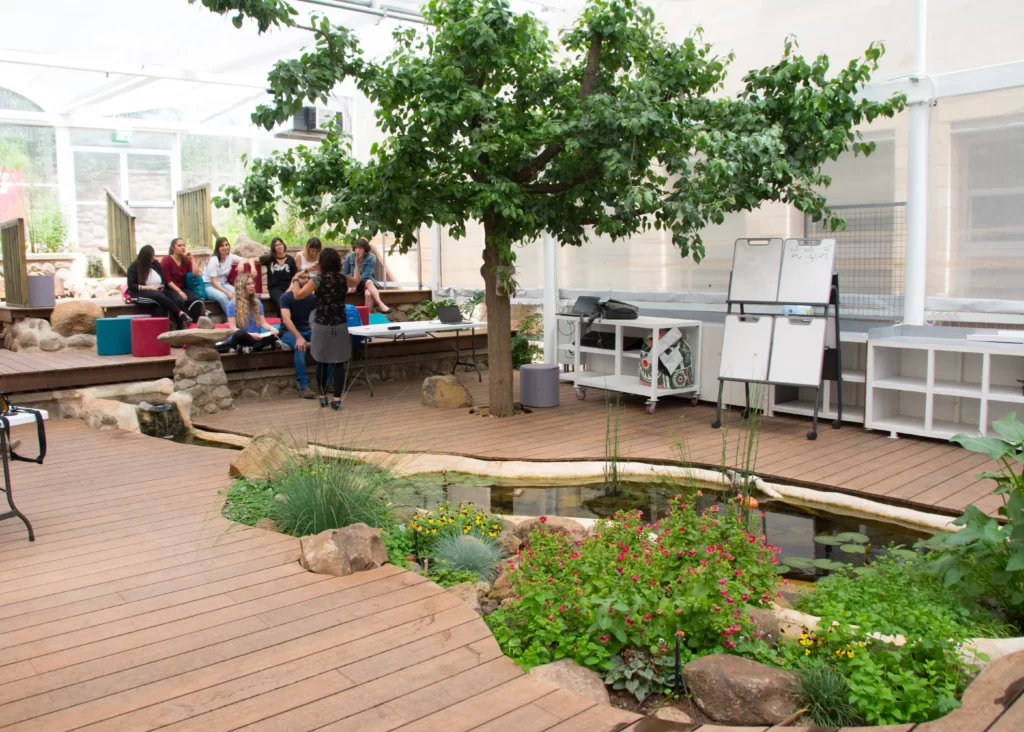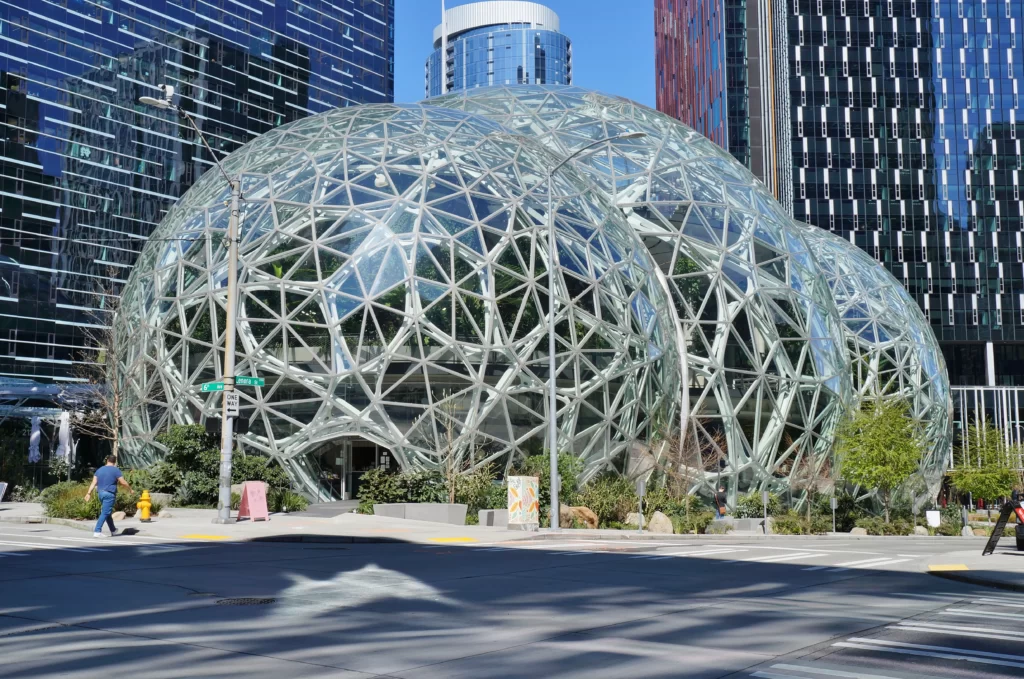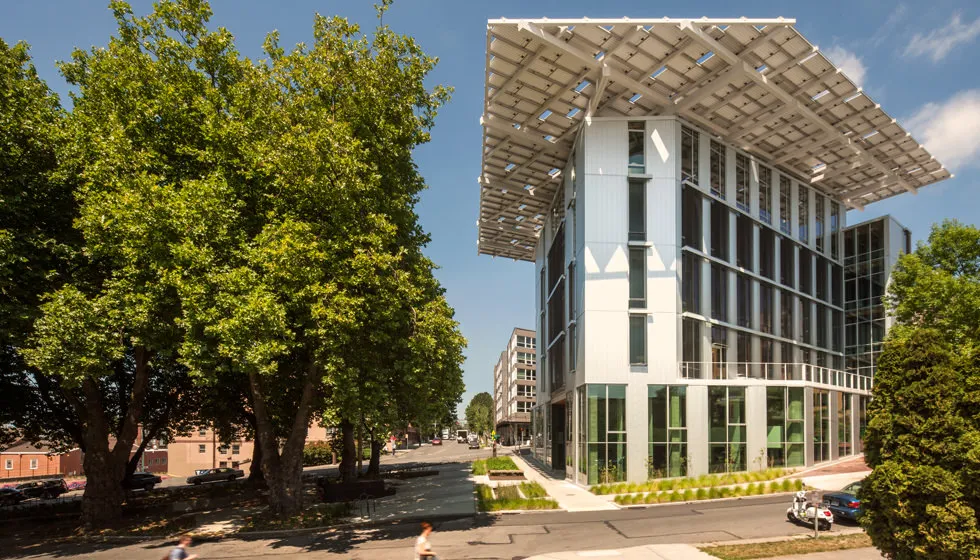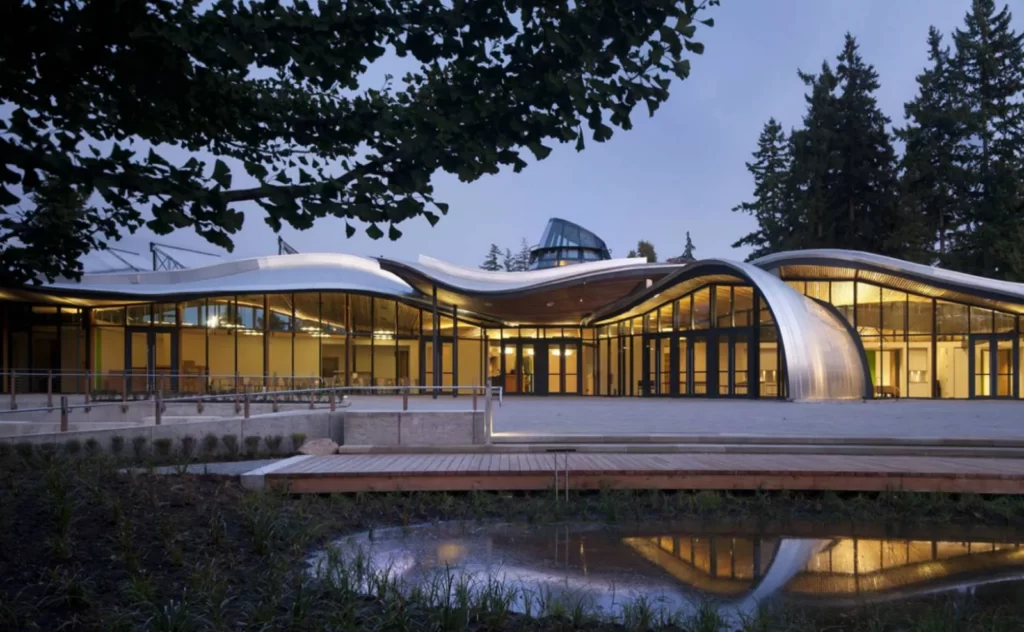If you want to know about the staircase design or landscape garden or requirements for disabled persons in a building, please click the link.
Biophilic design is a concept that centers around incorporating natural elements into the built environment to create spaces that promote health, well-being, and productivity. Biophilic design aims to reconnect people with nature by integrating natural elements such as plants, natural light, and water into the design of buildings and other man-made spaces.

The term “biophilic design” was first coined by American biologist Edward O. Wilson in his book “Biophilia,” which explored the innate human connection to nature. The concept of biophilic design has gained popularity in recent years as people have become more aware of the importance of sustainable living and the impact of the built environment on our health and well-being.
The importance of biophilic design lies in its ability to create spaces that promote physical, emotional, and psychological health. Studies have shown that incorporating natural elements into the design of buildings can reduce stress, increase productivity, and improve overall well-being. Biophilic design also supports environmental sustainability by reducing energy consumption and creating more natural habitats for local flora and fauna.
1) Benefits of Biophilic Design
Biophilic design is a design approach that incorporates natural elements into indoor and outdoor spaces to enhance the connection to nature and promote well-being. Here are some benefits of biophilic design:
i) Psychological Benefits
- Reduces stress: Studies have shown that exposure to nature can reduce stress levels and improve overall well-being. Biophilic design elements such as plants, natural light, and water features can help create a calming and relaxing environment.
- Improves mood: Biophilic design has been linked to improved mood and happiness. Exposure to nature has been shown to increase serotonin levels in the brain, which can help regulate mood and promote feelings of happiness and well-being.
- Enhances creativity: Biophilic design can also promote creativity by creating a stimulating and inspiring environment. Natural elements such as plants and water can provide a sensory experience that can help inspire new ideas and promote creative thinking.
ii) Physical Benefits
- Improves air quality: Biophilic design can help improve air quality by incorporating plants that filter toxins and pollutants from the air. This can help reduce the risk of respiratory illnesses and promote overall health.
- Regulates temperature: Biophilic design can help regulate indoor temperature by incorporating natural shading elements such as trees and plants, which can help reduce the need for artificial cooling and heating systems.
iii) Economic Benefits
- Increases property value: Incorporating biophilic design elements into a property can increase its value by making it more attractive to potential buyers or tenants. Studies have shown that properties with biophilic design elements can command higher prices than those without.
- Improves employee productivity: Biophilic design can also improve employee productivity by creating a more comfortable and stimulating work environment. This can lead to improved job satisfaction, reduced absenteeism, and increased productivity.
Incorporating biophilic design into personal and professional spaces can have numerous benefits for both individuals and organizations. In the next sections, we will explore the different elements of biophilic design, how it can be implemented in various settings, and tips for incorporating biophilic design into your own spaces.
2) Biophilic Design Elements
Biophilic design elements are natural features and materials incorporated into the built environment that mimic natural settings, and promote a connection to nature.

Biophilic design can be incorporated into spaces in a variety of ways. Here are some of the key elements that are often used to create biophilic environments:
i) Natural Light
Natural light is one of the most important elements of biophilic design. It has been shown to improve mood, enhance productivity, and regulate circadian rhythms. Incorporating large windows, skylights, and other openings that allow natural light to enter a space can help create a brighter and more inviting atmosphere.
ii) Views of Nature
Views of nature can also have a significant impact on well-being and productivity. Incorporating views of green spaces, water features, and other natural elements can help create a sense of calm and relaxation. This can be achieved by positioning workstations and seating areas near windows, or by incorporating outdoor spaces such as courtyards and gardens.
iii) Natural Materials
Using natural materials such as wood, stone, and bamboo can help create a more organic and natural environment. These materials can be used for flooring, wall coverings, and furniture, and can help create a sense of connection to the natural world.
iv) Greenery
Incorporating plants into a space is a key element of biophilic design. Plants can help filter the air, regulate humidity, and create a sense of tranquility. They can be incorporated in a variety of ways, such as potted plants, living walls, and hanging planters.
v) Water Features
Water features such as fountains, ponds, and waterfalls can help create a sense of tranquility and relaxation. The sound of flowing water can be soothing and calming, and can help create a natural ambiance in a space.
vi) Natural colors
Using natural colors such as green, brown, and blue can help create a calming and relaxing environment.
vii) Natural textures
Incorporating natural textures such as rough stones, wooden panels, or woven fabrics can create a tactile connection to nature and provide a sense of comfort and warmth.
viii) Organic shapes and patterns:
Incorporating organic shapes and patterns such as curved lines, spirals, or fractal patterns can mimic patterns found in nature and provide a sense of relaxation and harmony.
ix) Animal presence
Incorporating animals such as birds, butterflies, or fish in a space can create a connection to nature and provide a sense of liveliness and joy.
x) Natural ventilation
Maximizing natural ventilation in a space through cross-ventilation, operable windows, or skylights can improve air quality and provide a sense of freshness.
xi) Biomorphic forms
Incorporating forms that mimic natural patterns such as leaf veins, tree branches, or seashells can create a sense of natural order and harmony.
xii) Natural scents
Incorporating natural scents such as essential oils, herbs, or flowers can create a relaxing and calming environment.
Incorporating these elements into a space can help create a more natural and inviting environment that promotes well-being, productivity, and creativity. In the next sections, we will explore how biophilic design can be implemented in various settings and provide tips for incorporating biophilic design into your own spaces.
3) Implementing Biophilic Design
Implementing biophilic design in your own spaces can be a great way to create more inviting and relaxing environments for yourself and others

Here are some examples of how biophilic design can be implemented in different settings:
i) Residential Spaces
- Homes: Biophilic design can be incorporated into homes in a variety of ways, such as creating a naturalistic garden, using natural materials such as wood and stone, and incorporating indoor plants and water features.
- Apartments: Even small apartments can benefit from biophilic design. Residents can incorporate plants, natural light, and natural materials into their spaces to create a more organic and natural environment.
ii) Commercial Spaces
- Offices: Biophilic design can improve productivity and employee well-being in office spaces. Incorporating plants, natural light, and views of nature can create a more calming and stimulating work environment.
- Retail Stores: Biophilic design can enhance the shopping experience by creating a more relaxing and enjoyable environment. Incorporating greenery, natural light, and water features can create a natural ambiance that promotes relaxation and comfort.
- Restaurants: Biophilic design can enhance the dining experience by creating a more natural and inviting environment. Incorporating plants, natural materials, and water features can create a relaxing and calming atmosphere for customers.
iii) Healthcare Facilities
- Hospitals: Biophilic design can help reduce stress and promote healing in healthcare facilities. Incorporating natural light, views of nature, and greenery can create a more calming and relaxing environment for patients and staff.
- Clinics: Biophilic design can help create a more welcoming and comfortable environment for patients in clinics. Incorporating plants, natural light, and natural materials can create a more organic and natural environment that promotes well-being.
iv) Education Facilities
Biophilic design can be incorporated into education facilities such as schools and universities to create more stimulating and inspiring environments for students and faculty. Natural light, views of nature, and greenery can help create a more inviting and engaging environment that promotes learning and creativity.
v) Public Spaces
Biophilic design can also be incorporated into public spaces such as parks, plazas, and transportation hubs to create more inviting and engaging environments for people. Incorporating natural elements such as trees, plants, and water features can help create a more natural and organic environment that promotes well-being and community engagement.
vi) Hospitality Spaces
Biophilic design can be incorporated into hospitality spaces such as hotels and resorts to create more relaxing and rejuvenating environments for guests. Natural light, views of nature, and greenery can help create a sense of calm and tranquility, while water features and natural materials can help create a more soothing and natural atmosphere.
vii) Urban Spaces
Biophilic design can also be incorporated into urban spaces such as streets, sidewalks, and public plazas to create more inviting and engaging environments for people. Incorporating natural elements such as trees, plants, and water features can help create a more natural and organic environment that promotes well-being and community engagement.
viii) Industrial Spaces
Even in industrial spaces such as factories and warehouses, biophilic design can be used to create more welcoming and productive environments. Incorporating natural light, views of nature, and greenery can help create a more inviting and stimulating environment for workers, while natural materials and water features can help create a more soothing and natural atmosphere.
Incorporating biophilic design into different settings can have numerous benefits for individuals and organizations. In the next section, we will provide some tips for incorporating biophilic design into your own spaces.
4) Tips for Incorporating Biophilic Design
Biophilic design is a design approach that incorporates natural elements into indoor and outdoor spaces to enhance the connection to nature and promote well-being.
Here are some tips for incorporating biophilic design in your home or workplace:
i) Interior Spaces
- Start small: Incorporate plants, natural materials, and natural light into your space to create a more organic and natural environment.
- Use color: Natural colors such as green, brown, and blue can help create a calming and relaxing environment.
- Create focal points: Incorporate water features, living walls, and other natural elements to create a visual focal point in your space.
ii) Exterior Spaces
- Create a garden: Plant a variety of trees, shrubs, and flowers to create a naturalistic garden that promotes biodiversity.
- Use natural materials: Incorporate natural materials such as stone, wood, and bamboo to create a more organic and natural environment.
- Create a water feature: Install a fountain, pond, or waterfall to create a sense of tranquility and relaxation.
iii) Cost-Effective Ways to Achieve Biophilic Design
- Use natural materials: Incorporating natural materials such as wood, stone, and bamboo can be a cost-effective way to create a more organic and natural environment.
- Use plants: Incorporating plants can be a cost-effective way to improve air quality and create a sense of tranquility in a space.
- Use natural light: Maximizing natural light can be a cost-effective way to create a brighter and more inviting environment.
By incorporating biophilic design into your interior and exterior spaces, you can create a more natural and inviting environment that promotes well-being, productivity, and creativity. And with cost-effective ways to achieve biophilic design, anyone can incorporate these principles into their own spaces.
Examples of Successful Biophilic Design Projects
The Amazon Spheres: Amazon’s headquarters in Seattle includes three glass domes filled with more than 40,000 plants, creating a biophilic environment for employees to work and relax.

The Bullitt Center: Seattle’s Bullitt Center is one of the greenest commercial buildings in the world, featuring a range of biophilic design elements such as natural light, water conservation systems, and rooftop gardens.

The VanDusen Botanical Garden Visitor Centre: The visitor center at Vancouver’s VanDusen Botanical Garden is a LEED Platinum certified building that features a green roof, rainwater harvesting, and natural ventilation systems.

5) Conclusion
Biophilic design is the practice of incorporating nature into the built environment. It is important because it has been shown to have numerous benefits for individuals and organizations, including reducing stress, improving mood and creativity, regulating temperature, improving air quality, and increasing property value and employee productivity.
Call-to-Action for Incorporating Biophilic Design in Personal and Professional Spaces
By incorporating biophilic design principles into your personal and professional spaces, you can create a more organic and natural environment that promotes well-being, productivity, and creativity. Start by incorporating natural materials, plants, and natural light into your space, and consider creating a garden or adding a water feature to your outdoor space. In professional settings, consider incorporating biophilic design elements such as plants, natural light, and views of nature into your workplace to improve employee well-being and productivity.
In conclusion, biophilic design is a powerful tool for creating healthier and more sustainable built environments. By incorporating biophilic design principles into our personal and professional spaces, we can create a more natural and inviting environment that promotes well-being and productivity.